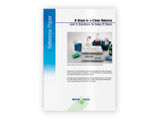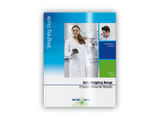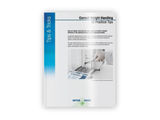To use all functions of this page, please activate cookies in your browser.
my.bionity.com
With an accout for my.bionity.com you can always see everything at a glance – and you can configure your own website and individual newsletter.
- My watch list
- My saved searches
- My saved topics
- My newsletter
Supercritical fluid chromatographySupercritical Fluid Chromatography (SFC) is a robust and easy-to-use form of normal phase chromatography ideally suited to the analysis and purification of low to moderate molecular weight, thermally labile molecules. It is especially suited to the separation of chiral compounds. Principles are similar to those of high performance liquid chromatography (HPLC), however SFC typically utilizes carbon dioxide as the mobile phase therefore the entire chromatographic flow path must be pressurized.
Additional recommended knowledge
ApplicationsSFC finds use in industry primarily for separation of chiral molecules, and uses the same columns as standard HPLC systems. Achiral molecules are more difficult to separate via SFC. ApparatusSFC metering pumps require that the pump head be kept cold in order to maintain the carbon dioxide in a liquid state where it can be effectively metered at some specified flow rate. The chemist sets mobile phase flow rate, composition, and column temperature. In addition, SFC provides an additional control parameter, pressure, which the chemist similarly sets through the keyboard. From an operational standpoint, SFC is as simple and robust as HPLC. Similar to a HPLC system, SFC can use a variety of detection methods. Primarily UV detection is used which requires the analyte to possess a chromophore. Sample PreparationAny molecule that will dissolve in methanol or a less polar solvent can be analysed using SFC, including polar solutes. Mobile PhaseThe mobile phase is composed of supercritical carbon dioxide, however modifiers are added which can be used to change the chromatography, these are typically alcohols like methanol, ethanol or iso-propanol. Other solvent such as Acetonitrile and Chloroform can be used as modifiers. The solvent limitations are system and column based.
|
|
| This article is licensed under the GNU Free Documentation License. It uses material from the Wikipedia article "Supercritical_fluid_chromatography". A list of authors is available in Wikipedia. |







